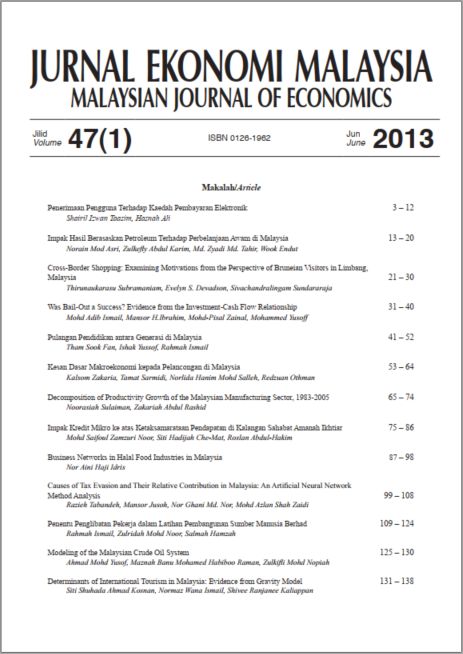Jurnal Ekonomi Malaysia
47 (1) 2013 163 – 172
School of Economics, Finance and Banking
College of Business, Universiti Utara Malaysia
06010, Sintok, Kedah
MALAYSIA
Department of Commerce
Politeknik Sultan Abdul Halim Muadzam Shah (POLIMAS)
06000, Jitra, Kedah
MALAYSIA
School of Economics, Finance and Banking
College of Business, Universiti Utara Malaysia
06010, Sintok, Kedah
MALAYSIA
Abstract
Analysts must include the status quo (SQ) option as one of the alternatives in the Choice Experiments (CE) technique to ensure the technique is consistent with the Hicksian welfare analysis. However, it comes at a price. Usually, respondents choose the option not because it provides the highest utility but to avoid making difficult decisions or to protest the attributes trade-off. One solution for investigating the effect of the SQ option is through the inclusion of the alternative specific constant (ASC) in an estimation model. However, the solution is not applicable for an estimation model that has no ASC. In the present study, the heteroscedastic extreme value (HEV) model is applied to investigate the affect of the SQ effect on preference uncertainty. By analysing respondents’ preferences relating to attributes at recreational parks, the results suggest that more uncertainty exists in the SQ option, while less uncertainty exists in the hypothetical alternatives.
Keywords
Bibliography
@article{Basri2013status,
title={Status Quo Effect and Preferences Uncertainty: A Heteroscedastic Extreme Value (HEV) Model},
author={Hasan-Basri, Bakti and Yahya, Nurul and Musa, Rusmani},
journal={Jurnal Ekonomi Malaysia},
volume={47},
number={1},
pages={163—172},
}
Receive updates when new articles are published.


